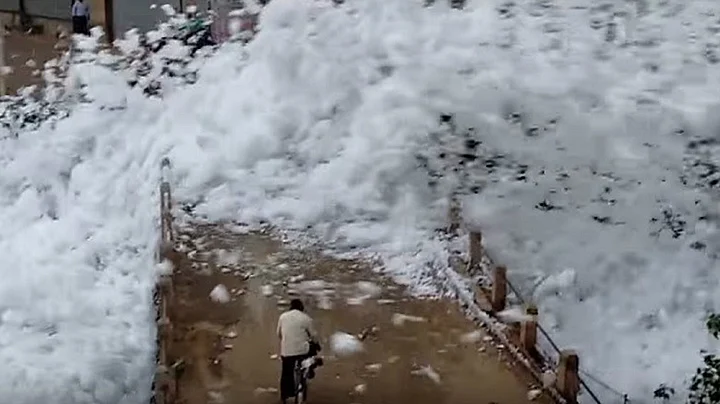Following the Bengalurean’s outcry over the Bellandur Lake that has been spewing toxic froth every time it rains in the city, a scientist at the Indian Institute of Science (IISc), TV Ramachandra, has reiterated that solutions are very much available, if the government had the willpower to execute it.
Most of these solutions are not unknown to the civic bodies. However, they have been ignored time and again.
—TV Ramachandra, Scientist, IISc
Speaking to The News Minute, he said that a few years back the Jakkur Lake was in a similar state and now it has been revived.
Why can’t they implement the same thing in Bellandur Lake?
—TV Ramachandra, Scientist, IISc
Ramachandra explained that foam, which is normally sticky and white in colour, is enriched with particulate organic and inorganic compounds such as nutrients (Nitrogen, Phosphorus and Carbon), cations (Sodium, Potassium, Calcium and Magnesium). Most surfactants originate from the detergents, oil and grease that are used in households or industry.
One of the big problems plaguing the lake is the unauthorised dumping of municipal solid waste and building debris.
“The lake receives about 500 million litres of sewage every day. The inflow of untreated or partially treated sewage and industrial effluents should be stopped immediately,” is step one according to the professor.
The lake needs de-silting and technological advancements allow wet dredging in a lake. Removal of accumulated silt will help in the storage of rain water and also recharging of ground water resources in the vicinity. This is essential as the groundwater table in the vicinity is as high as 1,000-1,500 feet.
—TV Ramachandra, Scientist, IISc
Effective Solutions
According to a report prepared by him, most of the sewage and wastewater generated is discharged directly into storm water drains that are ultimately linked to water bodies which have contaminated the surface and ground waters. The deterioration and degradation of lake water quality occurs due to the inflow of untreated sewage, dumping of domestic and municipal solid waste, silt and nutrient accumulation that allow profuse growth of algae and aquatic plant.
The report suggests constructing wetlands with shallow algal ponds to help in the removal of nutrients and allow only treated wastewater (sewage and effluents) to the lake.
Re-establishing inter-connectivity among lakes is another important step that needs to be taken.
Rejuvenation is meaningful only when all interconnected lakes in the series are restored otherwise Bellandur and Varthur lake will continue to face contamination due to polluted lakes in the upstream.
—TV Ramachandra, Scientist, IISc
A ban on alterations in the topography should be done.
The report says that due to large scale land use changes and filling of low lying area, some of the new localities are now vulnerable to floods.
He pointed out that, re-establishing wetlands at the inlets of these lakes can be done if the encroachments by land mafia are evicted immediately.
In the report, the scientist said that encroachment near storm water drains and Raja Kaluves should be removed as it has led to stagnation of water and flooding in Yamalur region.
A threshold on high rise building in the region should be set to protect valley zones considering ecological function and these regions are ‘NO DEVELOPMENT ZONES’ as per CDP 2005, 2015.
One can implement it in 15 to 18 months if they have the will to do it. If they don’t, they can talk for another 10 years without getting any work done.
—TV Ramachandra, Scientist, IISc
(At The Quint, we question everything. Play an active role in shaping our journalism by becoming a member today.)
